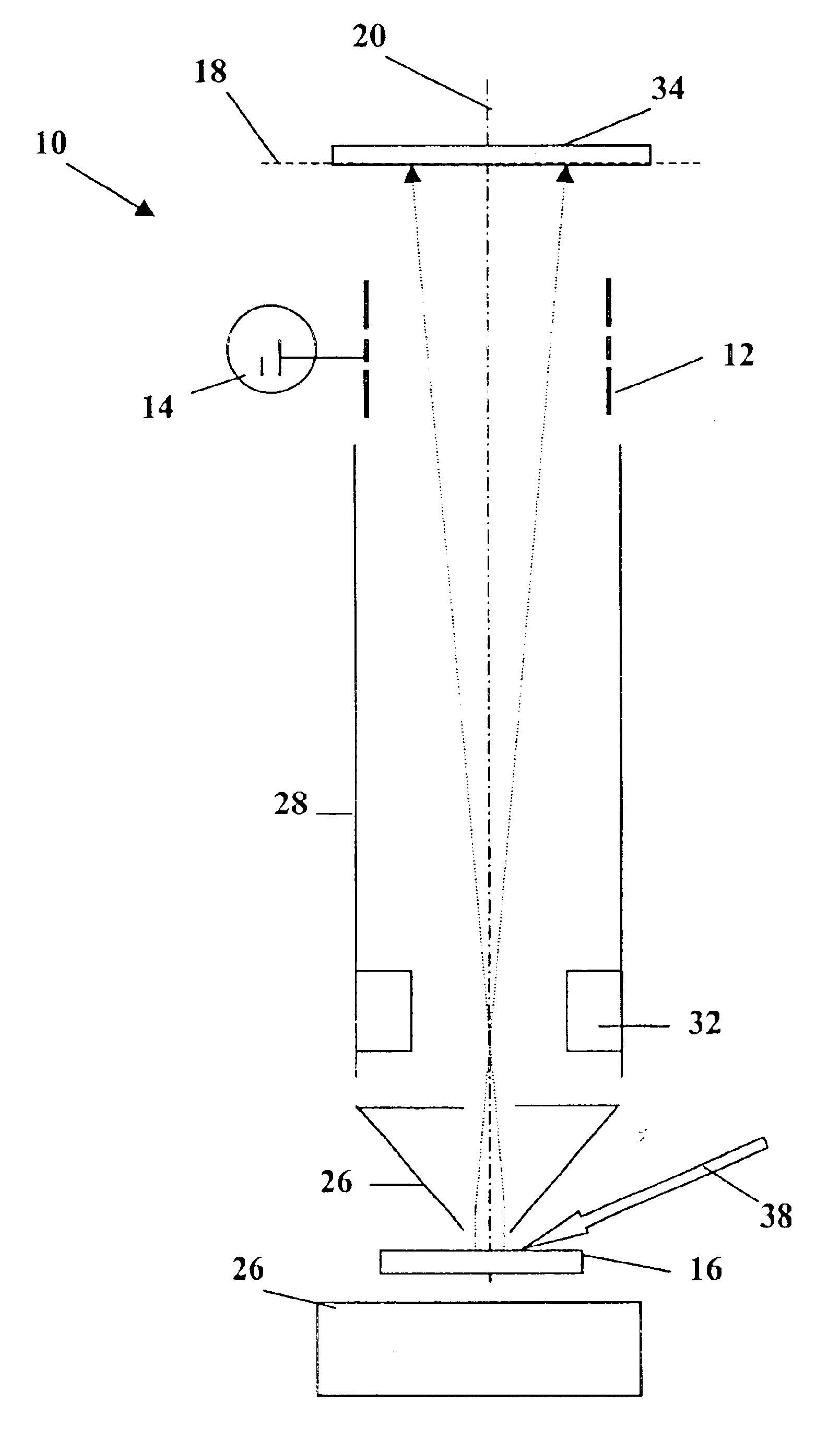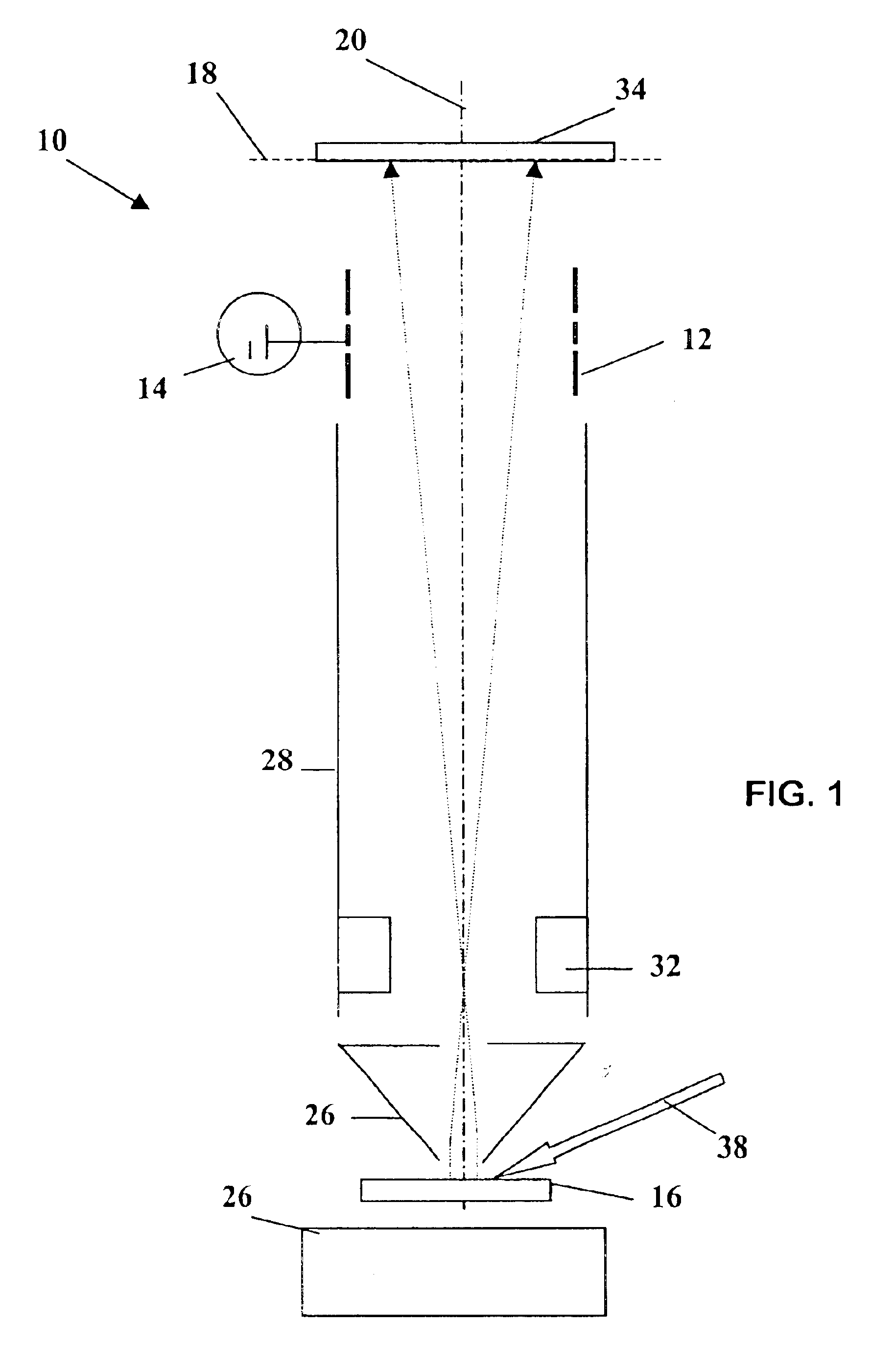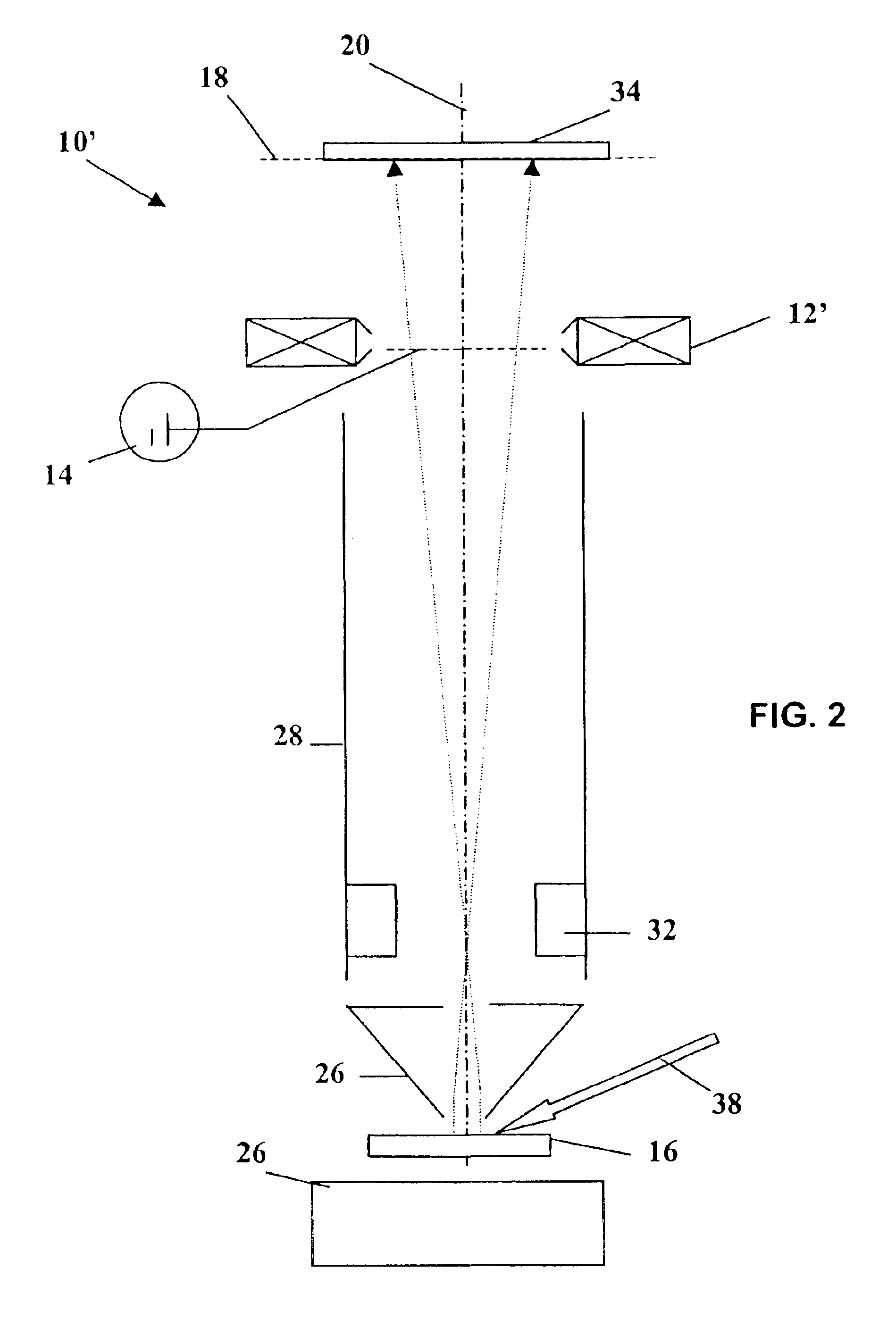Reducing chromatic aberration in images formed by emmission electrons
- Summary
- Abstract
- Description
- Claims
- Application Information
AI Technical Summary
Benefits of technology
Problems solved by technology
Method used
Image
Examples
Embodiment Construction
[0023]FIG. 1 illustrates an EEM 10, exemplary of an embodiment of the present invention. EEM 10 includes an objective lens 26, a drift chamber 28, a dynamic projector lens 12, and an electron detector 34. An optional deflector / stigmator unit 32 also forms part of EEM 10. EEM 10 may be used to image an object 16 or a portion thereof using pulsed electrons emitted from object 16. Beam 38 may be a beam of electromagnetic waves, such as UV light or X-rays, or charged particles, such as electrons. A radiation source (not shown) may form part of EEM 10 to excite object 16 to emit electrons by generating radiation beam 38. Drift chamber 28 may have an axial length between 20 and 100 cm. An example detector 34 may include a multi-channel-plate (MCP) and a digital sampling oscilloscope to image object 16.
[0024]Lens 12 is positioned at a distance from object 16 to focus electrons emitted from object 16 in a target plane 18 along an optical axis 20 to form an image 22 of object 16.
[0025]An ele...
PUM
 Login to View More
Login to View More Abstract
Description
Claims
Application Information
 Login to View More
Login to View More - R&D
- Intellectual Property
- Life Sciences
- Materials
- Tech Scout
- Unparalleled Data Quality
- Higher Quality Content
- 60% Fewer Hallucinations
Browse by: Latest US Patents, China's latest patents, Technical Efficacy Thesaurus, Application Domain, Technology Topic, Popular Technical Reports.
© 2025 PatSnap. All rights reserved.Legal|Privacy policy|Modern Slavery Act Transparency Statement|Sitemap|About US| Contact US: help@patsnap.com



